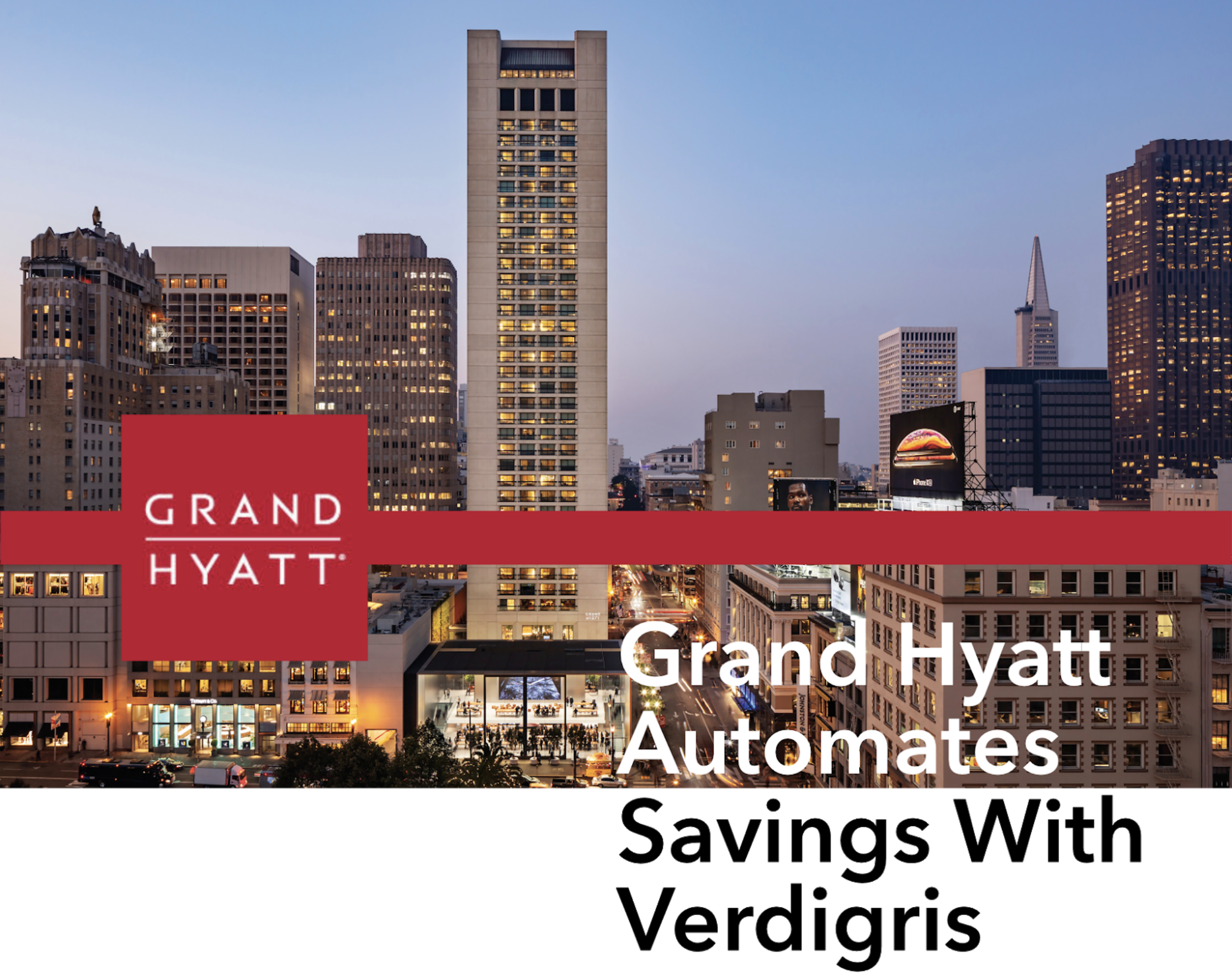
- Customer
- Grand Hyatt San Francisco
- Building
- 668-room hotel with retail tenants
- Highlights
- 1. Automatically identified non-critical equipment to turn off to avoid demand charges without impacting guest comfort 2. Required no additional time or effort from onsite engineering team, freeing them up to focus on other projects 3. Saved 20% of the controlled load while achieving an average monthly ROI of 41%
The Challenge
As one of the premier hotels in the heart of the city, Grand Hyatt San Francisco maintains a commitment to providing the best experience for its guests while being good stewards of the community and environment. In pursuit of this goal, Grand Hyatt San Francisco has established a reputation as a leader in smart-building and green technology.
Grand Hyatt San Francisco has been a Verdigris customer since 2015, when the Director of Engineering came to us looking for an accurate and innovative solution to account for energy costs associated with the hotel’s retail tenant. Verdigris systems revealed that the tenant was responsible for a higher portion of the building’s energy costs than had been initially estimated. This was due to high energy usage during expensive peak-demand periods when many hotels typically have relatively low demand. This discovery was only possible through high-frequency circuit-level metering from Verdigris, and has allowed the hotel to avoid paying high costs for energy it isn’t using.
Since then, our relationship has expanded beyond submetering to include whole-building metering, Intelligent Alerts, and Adaptive Automation to deliver thousands of dollars in energy savings for the hotel.
![[quote-hyatt]](http://images.ctfassets.net/xygxkw97gcce/2kM0cEKc1g7pQGmFusAfvk/44d248bcd5837006e177e5513db0e7ae/quote-hyatt.png)
The Approach
Verdigris Adaptive Automation uses automated demand management (ADM) to control equipment autonomously in the background with no involvement necessary from the building engineering team, much like autopilot in a self-driving car.
To implement Adaptive Automation, Hyatt connected Verdigris energy meters to the building’s main panel and integrated the system into the building management system (BMS). Then, non-critical equipment in the hotel were identified that could be turned off during peak periods without affecting guest comfort.
Unlike traditional demand management which uses predetermined values to establish a high threshold, Verdigris accounts for more parameters and continuously adjusts the target for peak demand. It is dynamic and learns from the building consumption patterns. The AI uses historical consumption patterns, weather data, and trend forecasting to send commands to the BMS to turn off non-critical equipment when the building approaches a new peak demand. Savings are achieved for each kilowatt of avoided demand that otherwise would have incurred the expensive demand charge, which can be over $20/kW.
The Results
Cost savings on demand management through Adaptive Automation has resulted in greater building optimization with zero effort from onsite personnel. Since installing Verdigris in June 2017, Adaptive Automation has consistently saved the hotel over 20% of the costs of the controlled load, resulting in an average monthly ROI of 41% and earnback of the initial investment in less than 6 months.
![[concept]](http://images.ctfassets.net/xygxkw97gcce/2Fvy5eE88JMcKFR93dPNTB/606a982c45fa83ce1a26aca20b6e9d1b/concept.png)
What’s Next?
As Verdigris Adaptive Automation continues to learn the building’s energy consumption patterns, it will continue to identify opportunities to optimize the building’s energy consumption and save money, effortlessly.
Contact us to connect with a product specialist.